
Round vibratory machines and disc finishing machines are devices for vibro abrasive treatment also sometimes referred to as tumbler grinding or tumbling . The processes offered by both types of machines are deburring, grinding, smoothing, cleaning or polishing, to mention a few. However, these machines work in a slightly different way than a traditional tumbler, in which the details were subjected to the above processes under the influence of slow rotation and gravity..
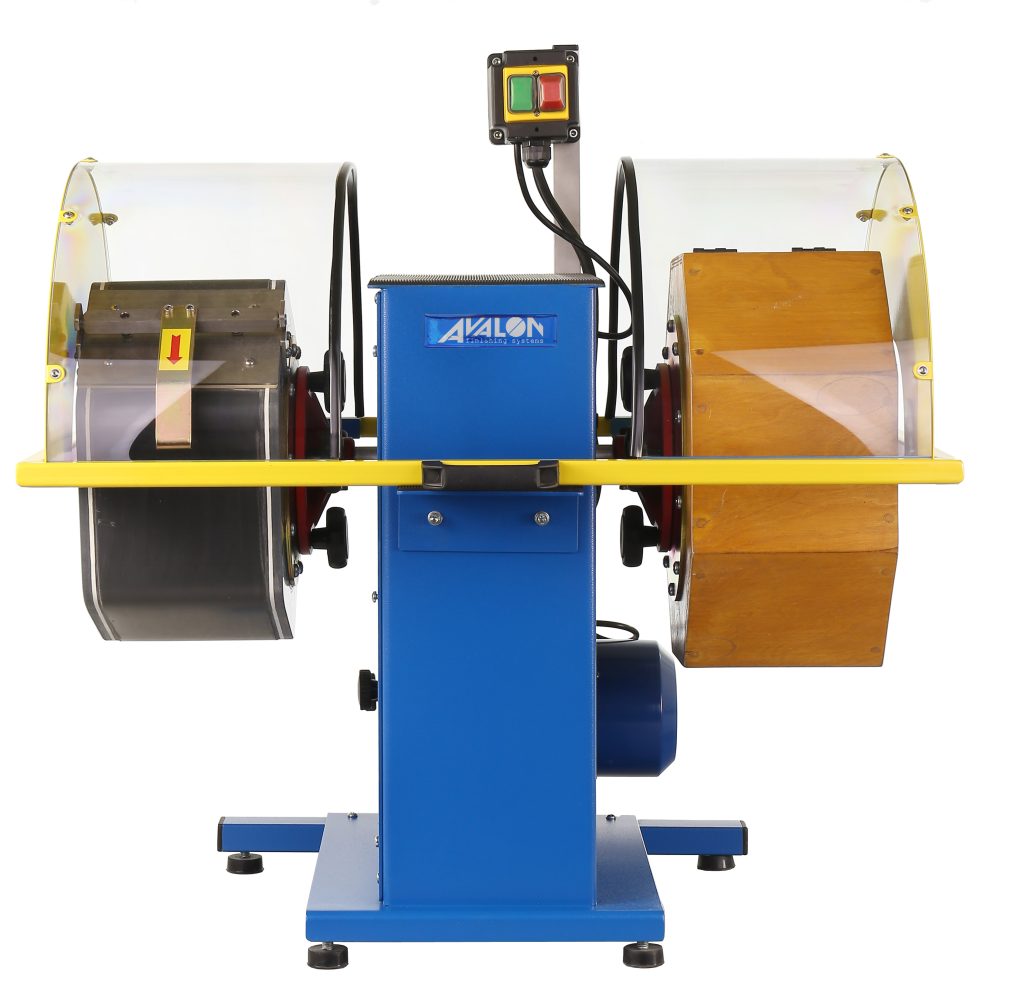
The operating principle of round vibratory machines is based on the interaction of two component movements: a vibrational movement that causes the working chamber to vibrate, and a rotational movement that causes the abrasive media with the workpieces to move evenly.
In disc finishing machines, also known as centrifugal tumblers, the operating principle is based on the generation of centrifugal force, which is created by the movement of the rotor. Abrasive media and workpieces move in a spiral motion inside of the working chamber, which causes the interactions between them and the forces that arise are stronger than in the vibration movement itself. Processing times are much shorter here than for analogous processes carried out in round vibratory machines and even several times shorter than for rotary tumblers.

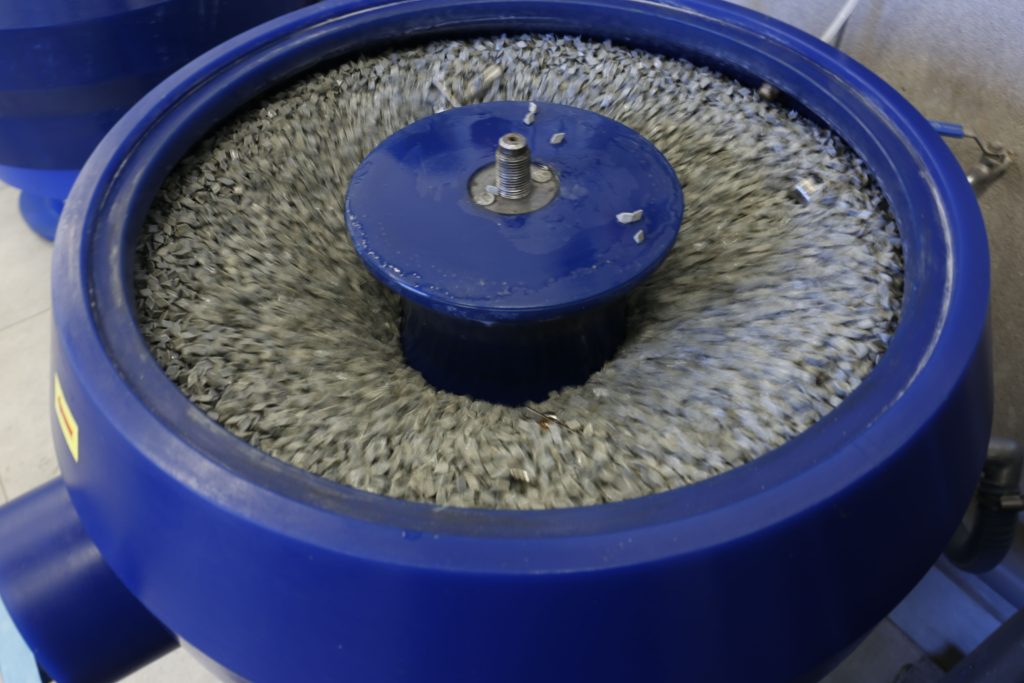
Does this mean that disc finishing machines are always a better choice? Not really.
Disc finishers’ main task is to replace manual pre-treatment and prepare the workpiece for subsequent surface finishing processes. They are intended for workpieces of limited dimensions and weight due to the risk of parts hitting each other under the influence of high centrifugal force.
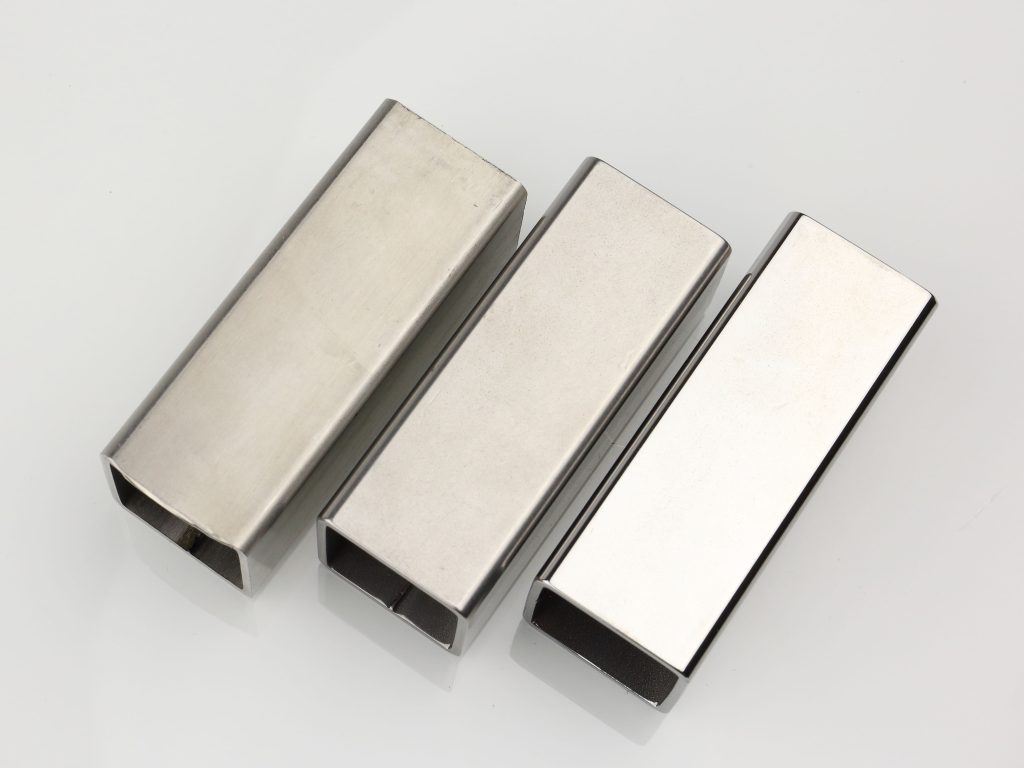

For bigger workpieces a perfect solution will be round vibratory machines in which the interaction of the abrsasive media and the workpieces is much more delicate ale less aggressive . Such movement minimizes the risk of collision of workpieces and helps to obtain a scratch-free polish. The use of vibratory polishers allows to obtain the smoothest surfaces. This is particulary important in special applications, where high requirements are placed on surface roughness.
In disc polishing machines, you can process quite small elements such as small jewellery pieces and it is carried in a dry process with the use of walnut shell and polishing pastes. Centrifugal tumblers are also good for polishing smooth surfaces of the size of coins in steel shots.
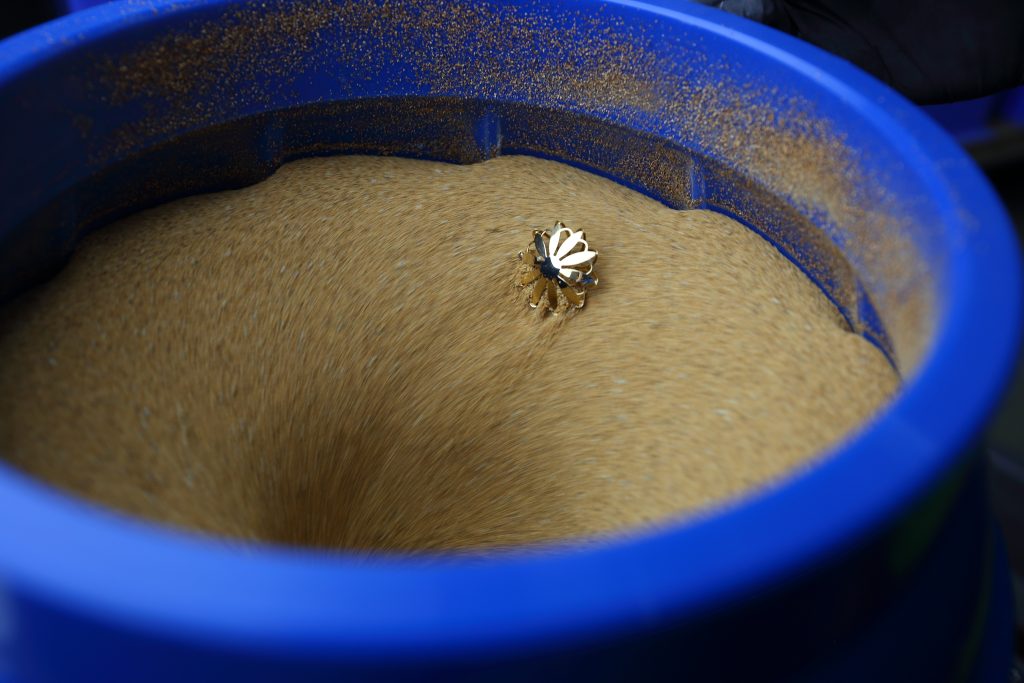
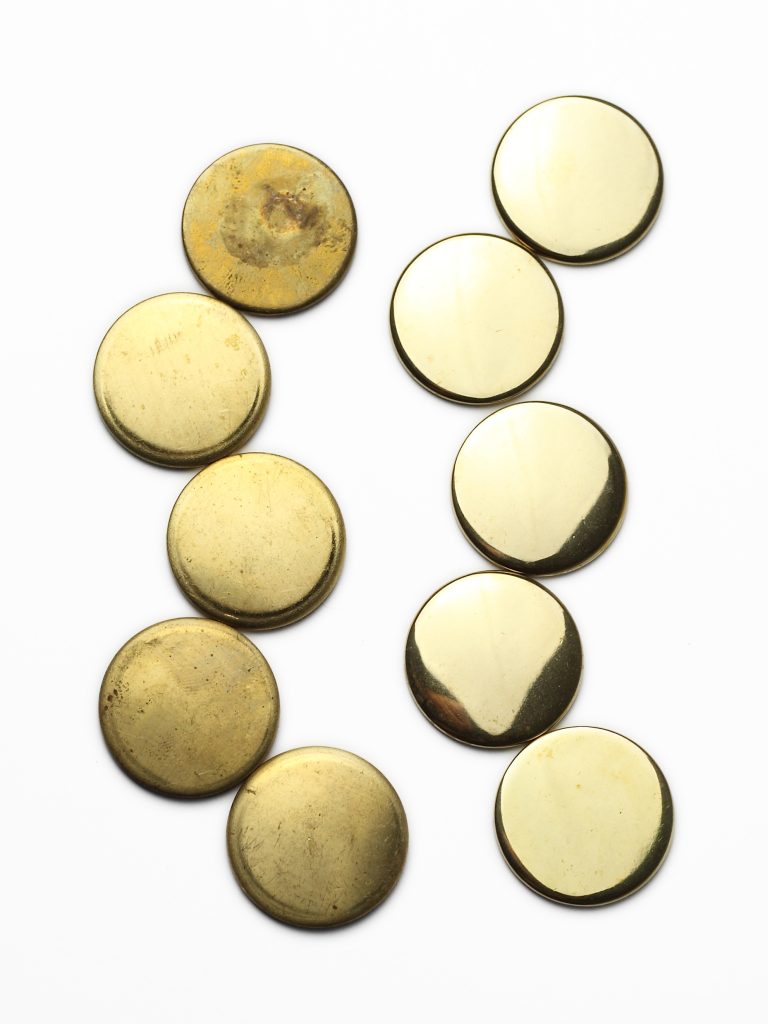
The choice between a vibratory and a centrifugal tumbler also depends on other factors such as kind of material, shape or the presence of holes in the workpieces to be processed. Flat and convex elements are processed very successfully in disc finishing machines. The processing of concave and partially covered surfaces is more effective in vibratory machines. The processing of flat elements in vibrators is, in turn, difficult due to the tendency for them to stick together, the so-called “packeting”. Sometimes in a multi-stage processing, the best results are achieved by using both types of machines.




